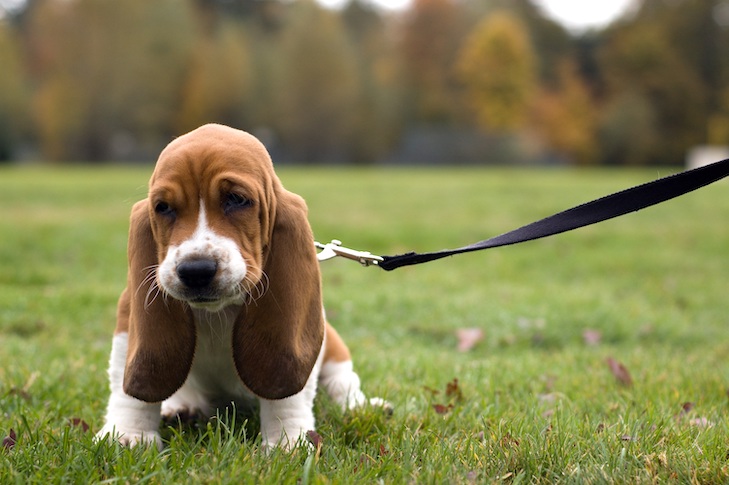Leash education is an essential part of dog ownership. Teaching your dog to walk lightly on a leash improves safety, complements your bond, and guarantees that walks are a satisfaction rather than a tug-of-battle. Starting with the right equipment is crucial.
Opt for a strong, comfortable collar or harness on your dog and a leash that’s approximately four to six toes in a period, which allows for management without restricting your dog’s natural movement. Initiating leash education in a familiar environment minimizes distractions and sets an effective tone.
This helps your dog get accustomed to the leash with a positive experience rather than stress. Building a strong relationship with your dog is foundational to effective leash training. Establish trust and understanding with consistent commands and reward-based reinforcement.
Executing Basic Leash Training Techniques
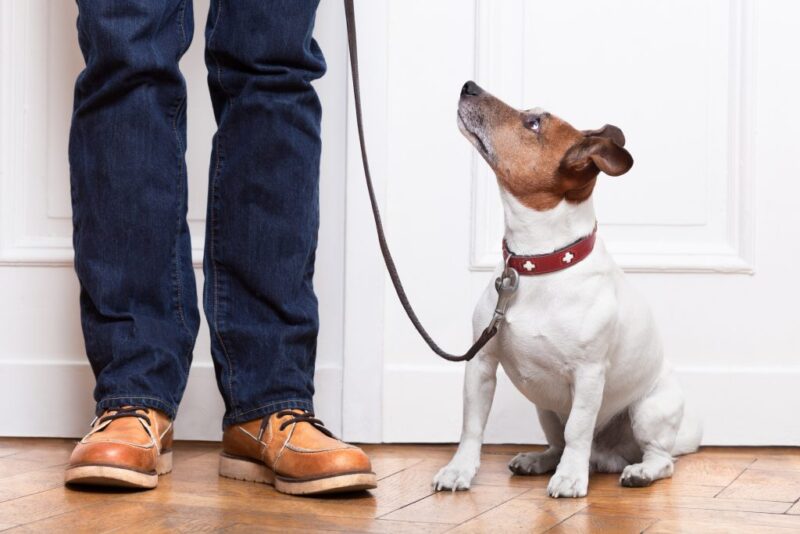
Training your dog to walk on a leash is a foundational skill crucial for their safety and the enjoyment of your daily walks. If you need help with this process, you can always contact professionals like TheCollarClubAcademy. In any case, consistency and positive reinforcement are key throughout the training process.
Introducing the Leash and Collar
Start using deciding on a snug collar or harness and an appropriate leash for your canine. Introduce those objects to your dog in an acquainted and distraction-loose environment.
Allow your dog to sniff and look into the leash and collar, associating them with wonderful stories by using presenting treats and rewards. Gradually put the collar or harness on at the same time as reassuring your dog with a mild voice and extra rewards.
Basic Leash Skills Development
Once your dog is comfortable with the collar and leash, begin training in a quiet area. Begin with short sessions, guiding your dog with cues such as “Let’s go” to initiate walking. Keep the leash slack and encourage your dog to remain by your side.
If they pull, stop walking and become a “tree” by standing still until they calm down; use treats and praise to reward attention. Consistently practice this to help your dog understand that pulling does not lead to forward movement.
Mastering the ‘Heel’ Command
To teach your dog to heel, start in a low-distraction environment. Hold treats in your hand at your side to lure your dog into the correct position. Issue the “heel” command clearly and reward your dog for following.
Work on maintaining a consistent pace, encouraging your dog to match your movements. Increase the duration of healing before giving a treat, building up to longer sequences of controlled walking with random rewards. Remember to exercise control calmly and confidently, ensuring your dog becomes responsive to the “heel” cue over time.
Advanced Leash Training and Troubleshooting
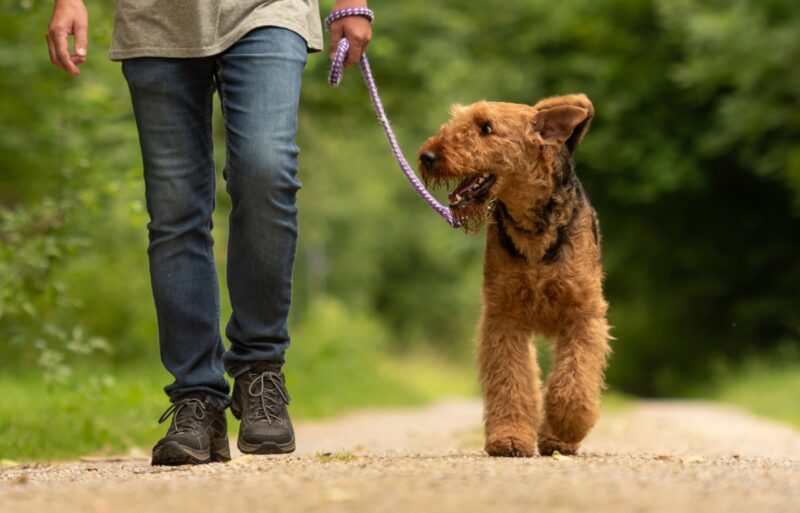
In this section, you’ll learn specific strategies to address common challenges such as leash pulling and reactivity, and how to handle distractions and lunging during walks.
Addressing Leash Pulling and Reactivity
When your dog pulls on the leash or shows signs of leash reactivity, including barking or lunging at other dogs, it’s crucial to remain calm and use positive reinforcement to correct the behavior.
- High-value treats: These can be effective in redirecting your dog’s attention back to you. Use them sparingly to reward a loose leash walk or calm behavior.
- Consistency is key: Regular, consistent training sessions will help your dog understand what is expected.
If pulling persists, consider a structured training plan, sometimes with the help of professional help, especially if your dog’s behavior includes aggression or extreme fear.
Dealing with Distractions and Lunging
Distractions like squirrels, other dogs, or moving vehicles can trigger lunging, putting both you and your dog at risk.
- Maintain safety: Always keep a firm grip on the leash and be prepared to redirect your dog’s movement.
Train your dog to focus on you despite distractions using commands like ‘look’ or ‘watch me’, rewarded with a treat.
For an energy dog, engaging in play before a walk can significantly reduce excess energy and improve focus during leash training sessions.
Cultivating a Positive Leash Walking Experience
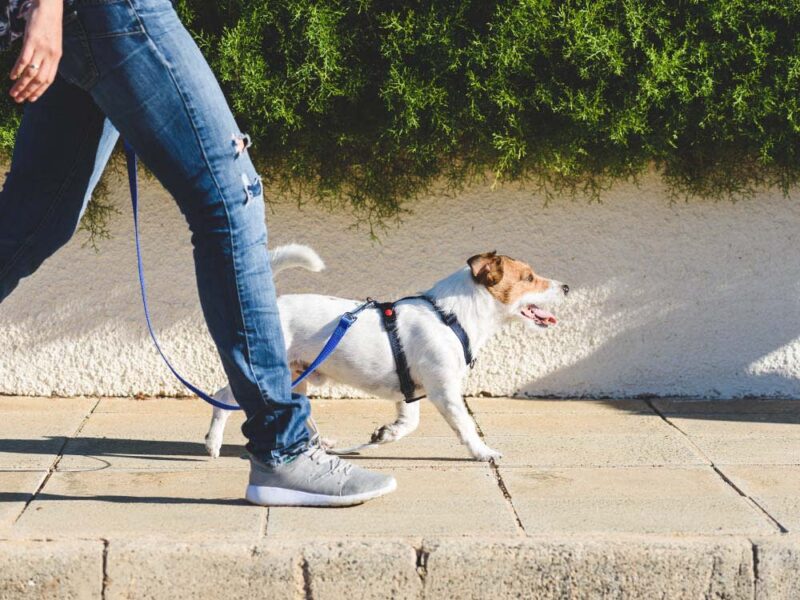
Successfully leash training your dog hinges on creating surroundings where the experience is tremendous and encouraging. It’s crucial to focus on using rewards to enhance excellent conduct, ensuring that each of you and your dog are safe, and encouraging a comfortable leash demeanor.
Encouraging Loose-Leash Walking
To encourage unfastened-leash strolling, begin in controlled surroundings consisting of your backyard in which distractions are minimal. Start with quick distances and use a valid cue like a clicker or a specific word to indicate that strolling near you is the proper behavior. When your canine keeps a free leash, promptly reward them with a treat or verbal praise to reinforce the behavior.
Using Rewards and Reinforcements Effectively
Rewards play a critical role in leash training. They should be timely and appropriate to the behavior you’re trying to encourage. Use high-value treats during the early stages of training to make a lasting impression. As your dog becomes more adept at leash skills, intermittent and varied rewards can help maintain their attention and trust.
- Immediate Reward: Give a treat as soon as your dog exhibits positive behavior.
- Varied Reinforcement: Switch between treats, praise, and play to keep your dog engaged.
Ensuring Safety During Walks
Safety is paramount when walking your dog. Abide by local leash laws and choose the right type of leash and collar to prevent accidents. Ensure the leash is comfortable for both you and your dog:
- Leash Length: This should be enough for some freedom, but not so long that control is compromised.
- Collar Fit: Snug enough that it won’t slip over the head, but loose enough to be comfortable.
Benefits of Effective Leash Training
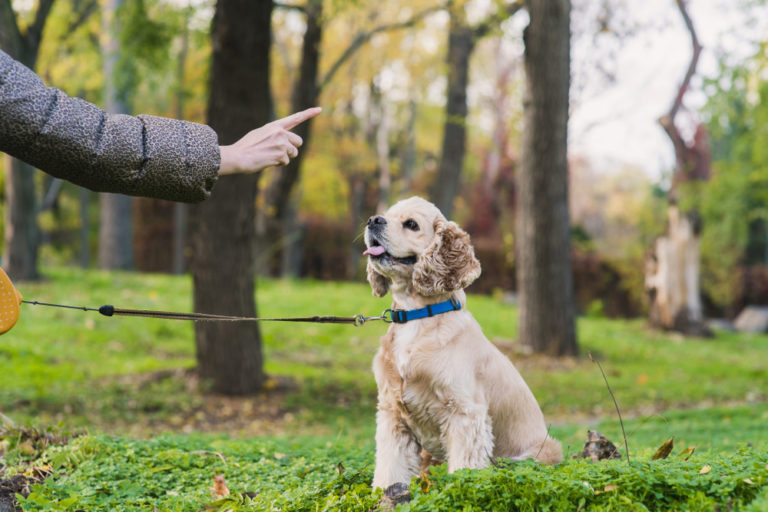
When you leash trains your dog properly, you’ll see an array of benefits that enhance both your experiences and your dog’s well-being. Here’s a breakdown of the key advantages:
- Maintaining control over your dog in numerous situations helps save you doubtlessly risky encounters with different animals or site visitors-related accidents.
- A nicely educated dog on a leash is much less likely to display unwanted behaviors like leaping at strangers or conducting aggressive movements.
- Walking together strengthens your connection because it is predicated on mutual agreement and understanding between you and your pet.
- Regular walks on a leash contribute to keeping your dog match, lively, and healthy, which could lessen capacity health-related issues down the line.
- Leash walks can expose your dog to numerous environments, humans, and different animals, which is critical for their social improvement and adaptability.
- For you, a dog that walks properly on a leash makes outings extra fun, lessening any stress or frustration associated with strolling.
- A leash-educated dog is less complicated to control, making visits to the vet, groomer, or public occasions extra first-class.
The Bottom Line
Leash schooling your dog is a crucial part of their improvement and ensures safety for each of you and your pet all through walks. With persistence and consistency, you could train your dog’s leash etiquette correctly.
By adding those techniques to your education, you’ll note a slow development in your dog’s leash abilities. Enhanced walks are not the most effective and exciting however additionally improve the bond between you and your dog.
